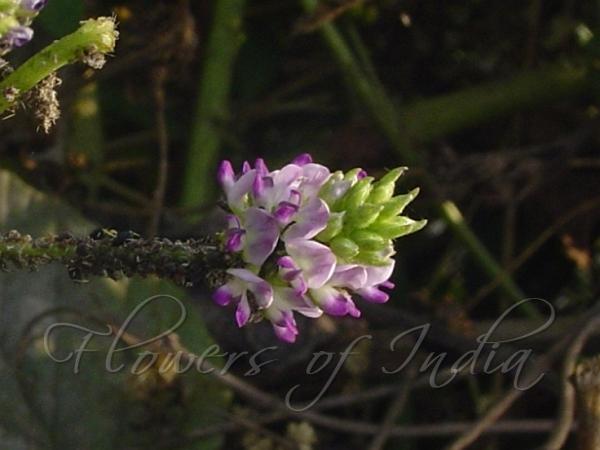|
| Scurfy Pea |
|

|

| File size | 147431 |
| Original date | 1/4/09 2:10 PM |
| Resolution | 736 x 552 |
| Flash | Flash did not fire |
| Focal length | 6.3mm |
| Exposure time | 1/250s |
| Aperture | 7.1 |
| Focus Distance | |
| Metering Mode | Spot |
| Camera make | SONY |
| Camera model | DSC-P52 |
| Sensor type |
|
|
|
|
Photo: |
Botanical name: Cullen corylifolium Family: Fabaceae (Pea family)
Synonyms: Psoralea corylifolia, Cullen corylifolia
Synonyms: Psoralea corylifolia, Cullen corylifolia
Scurfy Pea is an erect, annual herb generally found in peninsular India.
Leaves are simple, roundish-ovate, undulating-toothed. Stipules are narrow
lance-shaped, recurved. Flowers are borne in dense spike-like racemes on
long solitary stalks in leaf axils. Flower-stalks are much shorter than the
sepals. Flowers are small, pale lilac, with the wings and keel dark purple-
tipped. Scurfy Pea flowers in the cold season. Seedpods are black, ovoid,
about 5 mm, hairless, tip with a short tip, irregularly netveined.
Scurfy Pea is native to NE Tropical Africa, S Arabian Peninsula, Tropical
& Subtropical Asia. It is also found in West Himalaya. Flowering: January.
Medicinal uses: Dry fruit of Scurfy Pea is one of the most popular Traditional Chinese
Medicine and officially listed in Chinese Pharmacopoeia. The plant is of
immense biological importance, and it has been widely exploited since ages
for its magical effect against several skin diseases, such as psoriasis,
leukoderma, and leprosy.
Dry fruit of Scurfy Pea is one of the most popular Traditional Chinese
Medicine and officially listed in Chinese Pharmacopoeia. The plant is of
immense biological importance, and it has been widely exploited since ages
for its magical effect against several skin diseases, such as psoriasis,
leukoderma, and leprosy.
Medicinal uses:
 Dry fruit of Scurfy Pea is one of the most popular Traditional Chinese
Medicine and officially listed in Chinese Pharmacopoeia. The plant is of
immense biological importance, and it has been widely exploited since ages
for its magical effect against several skin diseases, such as psoriasis,
leukoderma, and leprosy.
Dry fruit of Scurfy Pea is one of the most popular Traditional Chinese
Medicine and officially listed in Chinese Pharmacopoeia. The plant is of
immense biological importance, and it has been widely exploited since ages
for its magical effect against several skin diseases, such as psoriasis,
leukoderma, and leprosy.
| Identification credit: Prashant Awale | Photographed in Maharashtra & UP. |
• Is this flower misidentified? If yes,